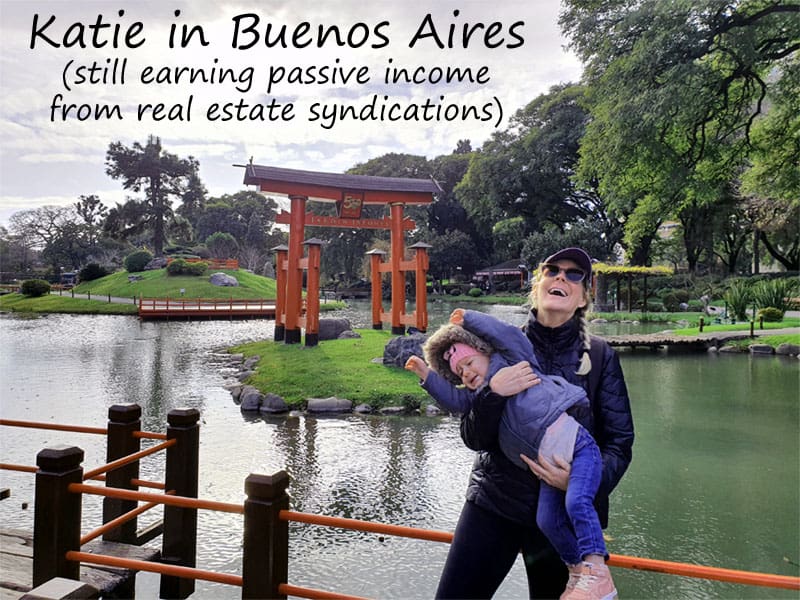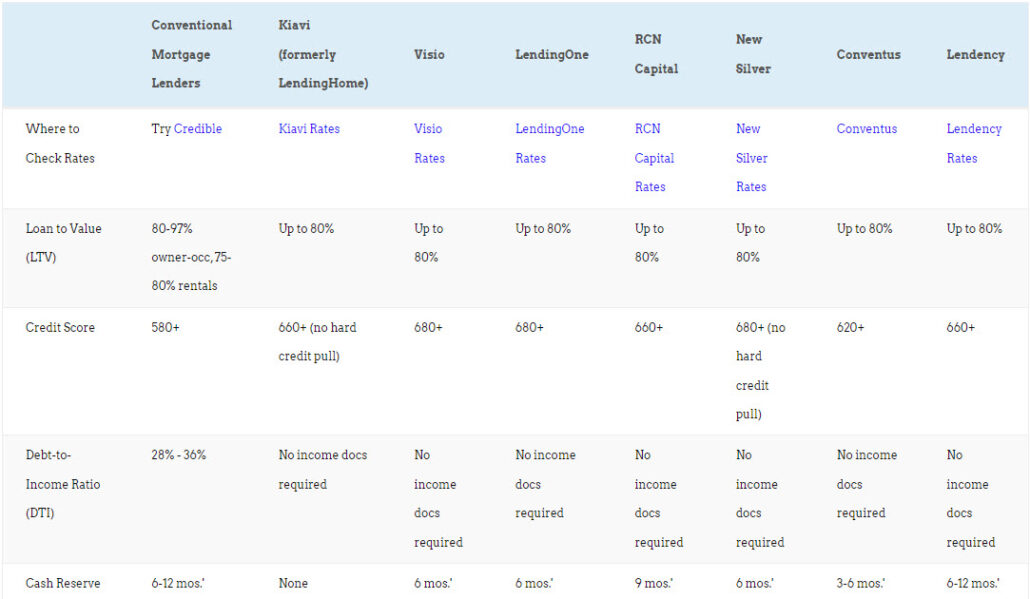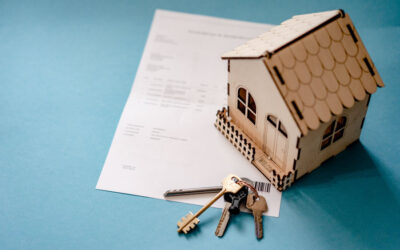Key Takeaways:
-
- You can borrow at a higher LTV (loan-to-value ratio) if you live in the property for at least a year, have higher credit scores, negotiate seller financing, or cross-collateralize with other properties.
- Alternatively, you can borrow the down payment in many cases, from sources ranging from unsecured business credit lines, credit cards, friends, family, HELOCs, or retirement accounts.
- If you use the BRRRR method, you can pull your down payment back out of the property in a few months.

Most real estate investors just assume the minimum down payment for a rental property is 20-40%. Personally, I’ve bought investment properties with none of my own money down.
Real estate investment properties offer passive income, appreciation, landlord tax deductions, and diversification for your investment portfolio. So why doesn’t everyone become a landlord?
Yes, it takes skill to find good deals on properties, and some labor to manage rentals. But the real hurdle for most people is the hefty down payment for an investment property.
So how do you shrink that down payment? What’s the minimum down payment for an investment property that you can make? Get ready to get creative.
What’s the Minimum Down Payment for a Rental Property?
Technically, the minimum down payment for an investment property is 0%. I’ve bought and renovated properties with none of my own money tied up in them.
But more likely, you’re looking at a down payment between 15-30% if you don’t get creative. Here are the four most common investment property loan options:
| Lender Type | Minimum Down Payment |
|---|---|
| Conventional: Single-family property | 15% |
| Conventional: 2-4 unit property | 25% |
| FHA loans | 3.5% |
| USDA & VA loans | 0% |
| Portfolio & hard money lenders | 15% |
9 Ways to Lower Your Down Payment on Investment Properties
Try these strategies for the lowest down payment on an investment property possible.
1. Move in for a Year
If you move into the property yourself and live there for at least a year, you qualify for an owner-occupied mortgage. Fannie Mae offers traditional loans with as little as a 3% down payment loan for investment properties — or at least properties that will be used as investments eventually. You could even use a 0% down payment options like the NACA program, USDA loan program, or a VA loan to buy an investment property if you move in for a year (assuming you meet the program requirements).
Alternatively, you could also borrow an FHA loan if your credit has some dents and scratches. With a credit score of at least 580, you can qualify for a 3.5% down payment.
Regardless of the loan type, if you make a down payment less than 20%, expect to pay for mortgage insurance. You can remove private mortgage insurance (PMI) from conforming loans once you pay the balance below 80% of the property value, but FHA loans require you to keep paying mortgage insurance for the entire life of the loan. That leaves a higher monthly mortgage payment, and slimmer monthly cash flow.
While living in the property, you can house hack by renting out rooms, adding an accessory dwelling unit (ADU), renting out storage space or parking, or renting the property on Airbnb when you’re not using it. Deni even house hacked by hosting a foreign exchange student!
After a year, you can move out and keep the property as a rental, leaving your low-interest mortgage in place.
Just beware that conventional loans not only report on your credit, but also cap how many loans can report on your credit before you no longer qualify. So, you can only house hack a few investment properties before reaching the conventional mortgage ceiling.
2. House Hack a Multifamily
Properties with up to four units are considered “residential” in the US, so you can buy them with a conventional mortgage. That lets you buy a multifamily property with up to four units as your primary residence, move into one unit, and rent out the others to cover your mortgage payment.
You can even use the future rental income from the other units to help you qualify for the loan. You’ll also enjoy better loan terms, lower mortgage rates, and lower monthly payments. All of which leads to more monthly cash flow for you as a landlord, even after you move out.
Sometimes conforming loans require a higher down payment on multi-unit properties than single-family homes, but it varies by loan program. Compare instant prequalified rate quotes through Credible* for multiple loan options.
If you want to crunch the numbers on a potential house hack, try our free house hacking calculator.
3. Borrow the Down Payment
Whether from a HELOC, home equity loan, personal loan, or private loan from friends or family, you can borrow the down payment on an investment property. At least when you take out a portfolio loan from a private lender — conventional lenders don’t allow any part of the down payment to be borrowed.
Portfolio lenders typically require you to put 15-25%. If you already have real estate equity, you can open a HELOC to borrow that equity as a down payment for a new investment property. Keep in mind you can take out HELOCs against your rental properties, not just your primary residence.
Better yet, draw on an unsecured business line of credit or card. Use Fund & Grow to open a series of unsecured business credit cards and credit lines, which often come with 0% initial interest rates and only 2.5% in cash advance fees if you use a service like Plastiq.
Alternatively, you could always ask your friends and family to borrow part of the down payment. They won’t report to the credit bureaus, and won’t break your knee caps if you default. Probably.
Just make sure you have a strong track record of high returns and cash flow with your existing properties, before putting your personal relationships on the line. If you fail to pay as promised, you risk alienating your closest friends and family.
You can also borrow against your workplace retirement accounts such as a 401(k). But you’re borrowing against your future, so only do this after you’ve done a few successful deals. You can even pull money out of your IRA temporarily, but you need to put it back within 60 days or the IRS slaps you with a 10% penalty for an early distribution.
Check out Visio, Kiavi, and Forman Loans as reputable portfolio lenders. All have a quick loan application process and closing turnaround time, and the more experience you have as a real estate investor, the more favorable loan terms you’ll get.
You can also get an instant quote on a down payment and interest rate from Lendency right here:
4. Owner Financing
No one says you have to borrow from a bank or mortgage company at all. Many investors score a low down payment for an investment property by borrowing owner financing from the seller.
Even if the seller won’t cover your main mortgage, they may offer seller financing for some or all of the down payment. Seller-held second mortgages let you make the minimum down payment on an investment property, if any at all.
The terms, up-front fees, and amortization period are negotiable with the seller. Most often, sellers finance these loans for a 3-5 year term, possibly with a balloon payment due at the end rather than amortizing the loan over just a few years. The seller may not even pull your credit report.
If the seller has their own mortgage on the property, you may be able to assume it or do a wrap around mortgage. That can leave you with a low-interest loan, well along its amortization schedule. It also helps you avoid hefty lender fees and closing costs on a new rental property loan.
As they say, everything in life is negotiable!
5. Improve Your Credit
The better your credit history, the more financing options you have available. All portfolio loans and conventional mortgage loan programs impose a minimum credit score, and offer lower interest rates, fees, and down payments for borrowers with better credit.
Start by pulling your current credit report, and looking carefully for any errors or omissions. If you spot one, file a dispute with the credit bureaus.
Beyond disputing errors, continuously work to improve your credit. That starts with making every single bill payment on time, every month, with no exceptions. If you carry a credit card balance, pay it off as quickly as possible, and pay it in full each month from now on.
Avoid opening or closing any credit accounts as you prepare to buy your next investment property. Both can ding your credit score, at least temporarily.
6. Use the BRRRR Method
No, it’s not cold in here.
The BRRRR method, an acronym for buy, renovate, rent, refinance, repeat, doesn’t necessarily reduce your down payment, but it does let you pull it back out after renovations are complete. That lets you recycle the same down payment over and over again to keep buying investment properties.
The trick here is to make sure you buy a property you can force equity in by renovating. You can borrow 100% of the renovation costs using a purchase-rehab loan, renovate the home, find renters, and then refinance, at which time you will be able to pull the initial down payment back out with your new loan. This works because your new loan is based on the after-repair value (ARV), not your initial purchase price.
Just make sure the property still produces strong monthly cash flow, even after refinancing. Use our free rental cash flow calculator to forecast your return on investment (ROI) and monthly net income.
7. Cross-Collateralization
Right… what’s that exactly?
Instead of making a down payment on an investment property, you can let your lender put a lien against your home or another rental property you have equity in. The lender waives the down payment requirement because they have additional collateral.
They secure two properties under one loan and, should you default, they will have two properties to foreclose on to recover their money. Which is itself an important point: you stand to lose more than just the new property, if you default on the loan!
But it goes to show you have more down payment options than you think for investment property financing.
 8. Partner with Friends & Family
8. Partner with Friends & Family
Instead of borrowing money from friends and family, you can always bring them into the deal as partners.
They contribute to the down payment for the investment property, and share in the profits as co-investors, rather than just giving you a short-term loan. Remember to always set out clear terms and expectations, as the dreaded mix that is family and money can be a headache if there is anything left in doubt.
For more ideas, check out 17 Clever Ways to Come Up with a Down Payment for a Rental Property.
9. Use a Credit Line to Finance the Entire Property
With a HELOC or unsecured business credit line, you can potentially finance the entire property purchase.
The limit on HELOCs depend on the equity in your home or other rental properties. But the limit on your business credit lines and cards depends almost entirely on your credit score. For example, Fund & Grow helps the average real estate investor open between $100,000-$250,000 in unsecured credit lines and cards. Cards you can draw cash from with only a 2.5% advance/withdrawal fee.
Sound high? It’s lower than most lenders charge in the form of points and flat fees.
Depending on your market, $100,000-$250,000 in credit lines are often enough to let you buy rental properties in cash. And if not in your local market, look into some of the best cities for real estate investing in the US, along with the cheapest real estate in the US. It’s easier than ever before to invest in real estate long-distance through Realtors, turnkey sellers like Norada, and through turnkey property marketplaces like Roofstock.
Bear in mind too that if you can make cash offers on properties, you can also negotiate lower purchase prices.
How to Get Approved for an Investment Property Loan
I’ve said it before and I’ll say it again: higher credit scores help you get approved for loans. If you have less than stellar credit, get cracking on improving it. Pay every bill on time, and pay down your credit card balances below 30% of their limits. If you don’t have much credit history, consider opening a credit builder loan or a credit card, even if all you can get approved for is a secured credit card. Aim for a middle credit score of at least 700, preferably 740 or above.
Better credit aside, go out and network with portfolio lenders and hard money lenders. Yes, these lenders have their own loan guidelines, but they’re more flexible than conforming lenders. Establish trust that you know what you’re doing, that you’re an experienced real estate investor.
Many of these lenders don’t verify your personal income. Instead, they underwrite loans based on debt service coverage ratio (DSCR). Bring these lenders deals that cash flow well, and they’ll offer you a warmer reception. If you do use a conventional mortgage loan, lenders typically allow a maximum debt-to-income ratio (DTI) of 36%, although some will go as high as 45%.
Don’t ignore cash reserves, either. Plan on having at least six months’ mortgage payments set aside as cash reserves to meet investment property loan requirements.
Or you could go in the other direction and move into the property for at least a year. Lenders use much looser underwriting guidelines for owner-occupied loans, allowing lower down payments, credit scores, and cash reserves.
Is the Minimum Down Payment a Good Idea?
Should you always just stick to the minimum down payment for an investment property? Are there upsides to increasing that down payment amount?
When flipping a house, a higher down payment rarely helps more than it hurts. But before you try to buy a rental property with no money down, consider that a higher down payment actually protects you in some ways.
The first is obvious: the less you borrow, the better the property cash flows. Which is, of course, the point of rental properties.
Higher down payments can also lower your interest rate, further cutting your mortgage payment and improving your cash flow.
Finally, a higher down payment means greater immediate equity. You don’t have to worry about becoming upside-down on your rental properties during a housing market correction.
Final Thoughts on Down Payments for Investment Properties
If you don’t plan to live in your investment property, expect to put down 15-30% on an investment property loan.
Lenders see investment properties as a riskier venture, as you are more likely to default on a property you do not live in. As with traditional mortgages, there are a few different types of investment property mortgages you should familiarize yourself with. If you go with a conventional mortgage, you will need high income, excellent credit, and “seasoned” cash reserves for the down payment.
With a portfolio loan, you typically need to put down at least 20%. However, most portfolio lenders allow you to borrow the property down payment, unlike conventional mortgage lenders. That means you can use business credit lines and cards like Fund & Grow to help you secure, to draw on and cover the down payment.
Your monthly income matters less (if at all), while the quality of your deal matters more. Portfolio lenders scrutinize the profit margins on your deal, and look less at your debt-to-income ratios or the source of your down payment. Many portfolio lenders like Visio and Kiavi don’t require any income documentation whatsoever.
Portfolio lenders underwrite your loan based on your likelihood to make money on the property, rather than traditional mortgage qualifications.
The first property is the hardest. As you build your real estate portfolio and passive income streams, it gets easier to save up down payments for your next investment property.♦
What tactics have you used to reduce your down payment on investment properties? What are you thinking about trying for your next rental property? Share your thoughts below!
More Unconventional Real Estate Investing Reads:
*Credible Disclosure: Prequalified rates are based on the information you provide and a soft credit inquiry. Receiving prequalified rates does not guarantee that the Lender will extend you an offer of credit. You are not yet approved for a loan or a specific rate. All credit decisions, including loan approval, if any, are determined by Lenders, in their sole discretion. Rates and terms are subject to change without notice. Rates from Lenders may differ from prequalified rates due to factors which may include, but are not limited to: (i) changes in your personal credit circumstances; (ii) additional information in your hard credit pull and/or additional information you provide (or are unable to provide) to the Lender during the underwriting process; and/or (iii) changes in APRs (e.g., an increase in the rate index between the time of prequalification and the time of application or loan closing. (Or, if the loan option is a variable rate loan, then the interest rate index used to set the APR is subject to increases or decreases at any time). Lenders reserve the right to change or withdraw the prequalified rates at any time.
Credible Operations, Inc. NMLS# 1681276, “Credible.” Not available in all states. www.nmlsconsumeraccess.org.
About the Author

G. Brian Davis is a real estate investor and cofounder of SparkRental who spends 10 months of the year in South America. His mission: to help 5,000 people reach financial independence with passive income from real estate. If you want to be one of them, join Brian and Deni for a free class on How to Earn 15-30% on Fractional Real Estate Investments.






















Great information Brian! We are working on the BRRRR method personally. This is the perfect article for a good share. I will be passing this along! Thanks!
Glad to hear it Dan, and keep us posted on your progress!
Every financial decision is about weighing the rewards, determining payoff against potential risk.
So true Dave!
Great ideas for minimizing the down payment! Thanks for these, going to try a few.
I am buying a 2-family home and plan to occupy one unit while we sell our primary home (>50% equity) and then work with a developer to build our dream retirement home. We are getting conflicting responses from lenders regarding obtaining a owner occupied conventual loan. No issue with 20% down as planning for a longer term rental after we leave. My question is regarding the 1 year minimum occupancy, is that the only requirement we need to fulfill? Being told otherwise and also by one lender that 25% is required and doesn’t believe our other offers are valid with only 20% down.
You can definitely get an owner-occupied loan for a two-unit property. Some programs let you put down less than 20% as well. But a lot of lenders don’t do many multifamily properties, so aren’t familiar with them. I’d speak to a few more lenders if I were you. Just don’t let them pull your credit until you commit to one.
I used to partner with a family member until we had a little feud but we are all good now. I learn my lesson so I am currently improving my credit score and using BRRRR Method but I might try other methods that are mentioned in this article. It is good to have a lot of options. Nice read.
Glad to hear you smoothed over your disputes with your family partner Adam!
Hi, I came across your site. I’m looking into investment properties to keep short I have 20 to 25% for a down payment and I have a renter that will sign an affidavit stating he will be the renter. Also I can make the payments if he backs out, but I am confident he will not. My problem is when I sold and purchased my new house this year, I missed a couple payments on my credit cards making my credit score drop to 550. The home and property is 3/4 acre 2-1 $55000. Hopefully I’ll get the loan! Any help would be gratefully appreciated! It won’t be my last!
Thanks and have a meaningful day!!
Hi Neil, check out our Investment Property Loans page for some lenders who may work with you. They each have a minimum credit score that they work with, but as portfolio lenders they’re easier to work with than conventional mortgage lenders.
I like to borrow owner financing when possible, to minimize my down payment on rental properties. The interest is a little higher but the lack of fees more than makes up for it.
Glad to hear you’ve had success with seller financing Marcelo!
House hacking does the trick to get started in real estate investing! It’s the best strategy I came up with when I started up.
Amen Jane!
I don’t recommend partnering with family or friends. Unless you are prepared to cut ties when things goes south. But in that case, you probably don’t like them enough to partner with them anyway.
I hear you Joseph!
The concept of living in one unit while renting out others to offset costs and build equity is truly a game-changer for aspiring real estate investors like myself. Hoping to buy my first multifamily property within the next six months.
Glad to hear it Ella, keep us posted!